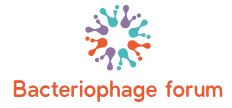RNA polymerase (RNAP) binds to one of many specificity variables, σ, to create a holoenzyme. It can recognize and bind to specific promoter regions. T This arrangement is known as the complex. The DNA is unwound and becomes more single-stranded (“available”) at the neighborhood of the initiation site (defined as +1). This arrangement is known as the complex. The RNA polymerase transcribes the DNA (the beta subunit begins the synthesis), but generates about 10 abortive (brief, non-productive) transcripts that are not able to depart the RNA polymerase since the exit channel is obstructed from the σ-factor. The σ-factor finally dissociates in the holoenzyme, and elongation proceeds. Extra curricular Factors
Transcription regulation stems in transcription factors that could impact the equilibrium of the construction.
Transcription is the process. Transcription occurs in the cytoplasm along with translation. Translation and prokaryotic transcription may happen. This is hopeless in eukaryotes, whilst translation happens beyond the nucleus from the cytoplasm, in which transcription occurs in a nucleus. In prokaryotes genetic material isn’t enclosed into a nucleus and contains access.
Two conclusion mechanics are well understood: Intrinsic conclusion (also known as Rho-independent transcription conclusion ) entails terminator sequences within the RNA that indicate the RNA polymerase to prevent. The terminator sequence is a sequence that creates a hairpin structure that contributes in the DNA template to the RNAP’s dissociation. Rho-dependent conclusion utilizes a termination variable called ρ variable (rho variable ) that is a protein to prevent RNA synthesis at particular websites. This protein binds in a rho utilisation website on the RNA strand also operates the mRNA to the RNAP across.
Crucial PointsIn prokaryotes genetic material isn’t included at a membrane-enclosed nucleus and contains access to ribosomes in the cytoplasm. Transcription is regarded as controlled by many different labs in prokaryotes. A number of these transcription factors are currently comprising DNA -binding motifs. Added transcription regulation stems in transcription factors that could impact the equilibrium of the holoenzyme construction at initiation.
The next steps happen, for transcription initiation, in sequence:
Measures of Transcription Initiation
Figure: Protein synthesis: An summary of protein synthesis.Within that the nucleus of this cell (light blue), genes (DNA, dark blue) are transcribed into RNA. This RNA is then subject to post-transcriptional control and modification, leading to a mature mRNA (red) which is then transported from the nucleus and into the cytoplasm (peach), where it undergoes translation into a protein. MRNA is translated by ribosomes (purple) that match with the three-base codons of the mRNA into the three-base anti-codons of the right tRNA.
Promoters could differ in”strength”; this is, how actively they market transcription of the adjoining DNA sequence. Promoter strength is in several (although not all) instances, regardless of how closely RNA polymerase and its associated accessory proteins bind to their individual DNA sequences. The more similar the sequences would be into some consensus sequence, the more powerful the binding would be.
Means of a number of labs in prokaryotes controls Psychotherapy. A number of these transcription factors are currently comprising themes.
